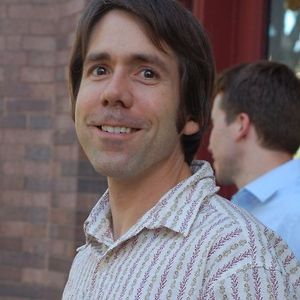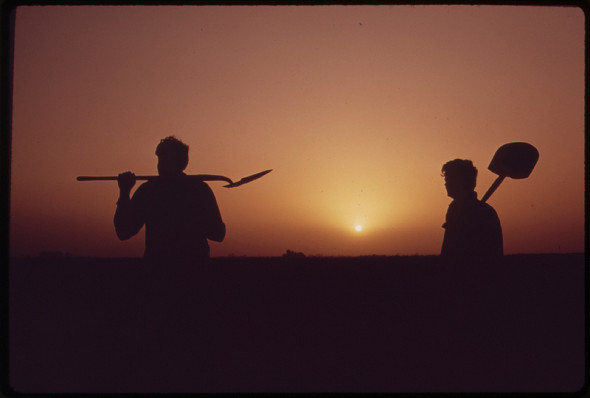By Troy Rapp
 Early in my meditation life, I found myself drawn to explore different styles of practice. I was in the midst of my first fall training period at Tassajara Zen Mountain Center after having spent two years practicing meditation in the Soto Zen tradition, when I found myself drawn to study Korean Zen that winter. A group of monks from this tradition had come to visit and brought with them an English translation of their teachings. I discussed this with the teacher under whom I had begun to practice Zen, and was strongly advised against it. The basis of this instruction was a belief that it was not possible to deepen a spiritual life without unwavering devotion to one style of practice. This type of admonition is not uncommon in the world of spiritual practice. I’ve encountered it from many teachers in a variety of traditions over the years. “If you’re digging a well, you won’t hit water by starting a new hole” goes the metaphor commonly used to support this perspective. I recognize its merit. There is a danger that students can dabble in many different methods, and use it as a distraction from making a sustained commitment to deepening their practice. In addition, the contradictions between different teaching styles can be confusing, and this can weaken the resolve of the practitioner. It is also important to recognize that different students have different affinities. Some students have a strong affinity for a particular tradition and will be well served by one-pointed devotion to that tradition. However, I would like to offer another perspective on the merit of exploring different traditions and integrating a variety of practice methods.
Early in my meditation life, I found myself drawn to explore different styles of practice. I was in the midst of my first fall training period at Tassajara Zen Mountain Center after having spent two years practicing meditation in the Soto Zen tradition, when I found myself drawn to study Korean Zen that winter. A group of monks from this tradition had come to visit and brought with them an English translation of their teachings. I discussed this with the teacher under whom I had begun to practice Zen, and was strongly advised against it. The basis of this instruction was a belief that it was not possible to deepen a spiritual life without unwavering devotion to one style of practice. This type of admonition is not uncommon in the world of spiritual practice. I’ve encountered it from many teachers in a variety of traditions over the years. “If you’re digging a well, you won’t hit water by starting a new hole” goes the metaphor commonly used to support this perspective. I recognize its merit. There is a danger that students can dabble in many different methods, and use it as a distraction from making a sustained commitment to deepening their practice. In addition, the contradictions between different teaching styles can be confusing, and this can weaken the resolve of the practitioner. It is also important to recognize that different students have different affinities. Some students have a strong affinity for a particular tradition and will be well served by one-pointed devotion to that tradition. However, I would like to offer another perspective on the merit of exploring different traditions and integrating a variety of practice methods.
While devotion to a particular style of practice can prove valuable, it is also possible to integrate a variety of methods so that various practices support and enrich one another. In Buddhism, this is known as upaya, which is commonly translated as “skillful means.” In this approach, different methods of practice are cultivated in response to various difficulties. For example, if a particularly strong experience of fear, anger or hatred is arising, and the intensity is such that equanimity cannot be established, it can be helpful to cultivate loving-kindness (metta) as an antidote. This method of practice can be used to take the edge off the experience. When the intensity has dissipated enough that equanimity can be established, then it becomes possible to engage in other methods, exploring the nature of the aversion more directly. Similarly, if one is overcome by drowsiness or lethargy in meditation practice, it can be helpful to engage in practices which build energy such as opening the eyes wide, taking a standing posture rather than a seated posture, or engaging in more vigorous physical activity.
In my own practice, the primary meditation object I have used consistently has been the breath. It’s what I started with. It works for me, so I’ve continued with it. However, in addition to this method, over the years I’ve explored many other methods, and have integrated some of them into my own practice in supporting roles. These include the practice of metta meditation, counting the breath, mental noting of where the attention is drawn, reciting the name of a Buddha or Bodhisattva, contemplating death, yoga asana, pranayama, exploring the mental and emotional landscape through dialogue, and the study of sacred texts from a variety of contemplative traditions.
 Each of these has proven valuable and supported the deepening of my practice in some way. I’ve come to recognize the possibility of a perspective which sees the integration of various practice methods as akin to having a toolbox stocked with a variety of tools for working with different types of challenges.
Each of these has proven valuable and supported the deepening of my practice in some way. I’ve come to recognize the possibility of a perspective which sees the integration of various practice methods as akin to having a toolbox stocked with a variety of tools for working with different types of challenges.
I’m also proposing a different perspective on the metaphor of digging a well. Rather than viewing the adoption of another style of practice as digging a new hole, I’m proposing that a variety of techniques can work together to support the deepening of the well. Just as one might use a shovel, a pickaxe, a rock hammer, or a pry-bar to good effect when encountering different layers of material in the course of digging a well, so might one employ different practices to deepen their awakening.
Troy Rapp will be teaching “Prajna Yoga: Full Spectrum Practice” with Theresa Murphy at Shambhala Mountain Center on October 25–27, 2013. Click here to learn more.


You’ve made some decent points there. I looked on the net for more
information about the issue and found most people will go
along with your views on this web site.
Here is my web site … Jonathan toews Jersey
wrinkle neck mules lyrics central daylight time
whoah this blog is wonderful i love reading your posts.
Stay up the good work! You recognize, a lot of persons are hunting round for
this information, you could help them greatly.